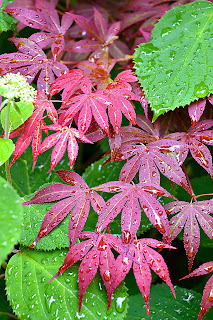Hershey Quilt Show and some observations on machine quilting
I did make it to the Hershey Quilt Show yesterday. (About a 3.5 hour ride from home, so possible as a day trip.) Bethanne Nemesh was the featured artist. Her pieces were absolutely stunning. Several included her beaded piping, a really special finishing treatment. (She explains how to make this on an episode of The Quilt Show.) She had a couch/love seat with a peacock design on it. Fantastic. Some of her whole cloth quilts were also on display. Lovely! Her machine quilting is spectacular. I really enjoy seeing the work of teachers like Bethanne and getting a chance to get up close and personal with it. There was also a display of antique quilts, all of which were basket quilts of some sort. I never knew there were so many different basket patterns. Both pieced and applique quilts were part of this display. Many of the quilts in the general display were applique and just incredible. Mostly han...





